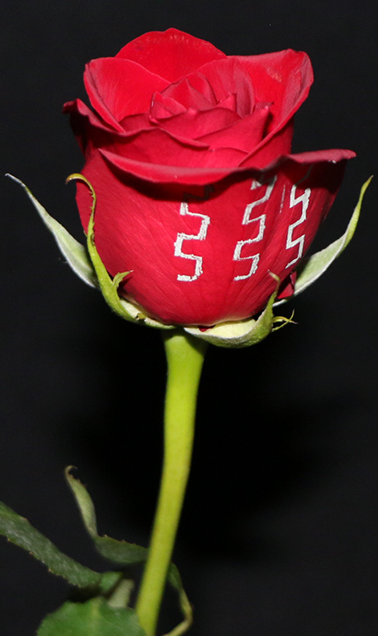Metal printed on petals
 US researchers have printed liquid-metal circuitry on rose petals, leaves, paper and even jelly.
US researchers have printed liquid-metal circuitry on rose petals, leaves, paper and even jelly.
The latest application of undercooled metal technology developed at Iowa State University features liquid metal (in this case Field’s metal, an alloy of bismuth, indium and tin) trapped below its melting point in polished, oxide shells, creating particles about 10 millionths of a meter across.
When the shells are broken – with mechanical pressure or chemical dissolving – the metal inside flows and solidifies, creating a heat-free weld or, in this case, printing conductive, metallic lines and traces on all kinds of materials, everything from a concrete wall to a leaf.
The technology could have all kinds of applications, including sensors to measure the structural integrity of a building or the growth of crops.
The technology was also tested in paper-based remote controls that read changes in electrical currents when the paper is curved.
Engineers also tested the technology by making electrical contacts for solar cells and by screen printing conductive lines on gelatin, a model for soft biological tissues, including the brain.
“This work reports heat-free, ambient fabrication of metallic conductive interconnects and traces on all types of substrates,” lead researcher Martin Thuo and his team wrote in a new paper describing the technology.







 Print
Print